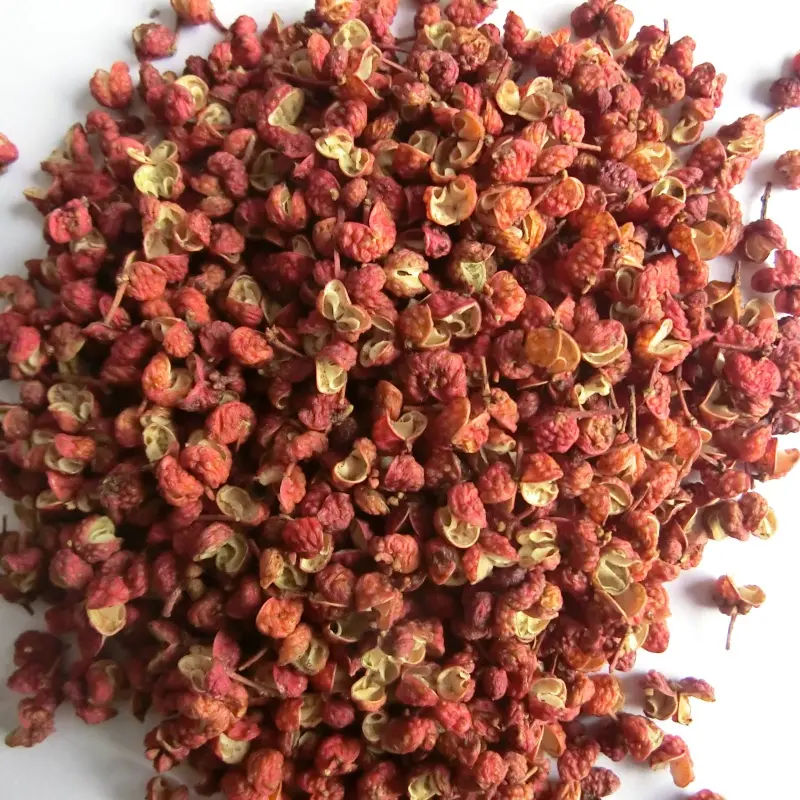Exploring the Differences Between Green and Red Sichuan Peppercorns
Sichuan peppercorns, also known as Szechuan peppercorns, are a cornerstone of Chinese cuisine, renowned for their unique flavor profile and tingling, numbing sensation. Among the varieties of Sichuan peppercorns, the green and red varieties stand out, each offering distinct characteristics and culinary uses. In this article, we delve into the differences between green and red Sichuan peppercorns, exploring their flavors, appearances, and culinary applications.
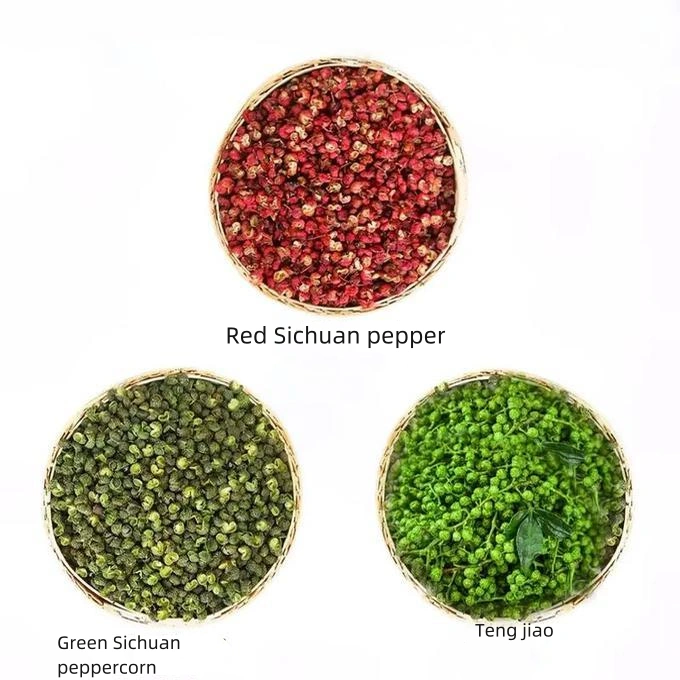
In the picture are red Sichuan peppercorns and green Sichuan peppercorns, vine peppers(藤椒). The difference between green and red peppercorns can be seen from the color. Vine peppers are generally picked when green peppercorns are immature, retaining the flavor of green peppercorns.
Green Sichuan peppercorns
Green Sichuan peppercorns, also known as Szechuan peppercorns, are a variety of Sichuan peppercorns harvested before they fully mature. They are renowned for their milder flavor profile compared to their red counterparts, offering a fresher, citrusy aroma with hints of pine and floral notes. Green Sichuan peppercorns are a staple in Chinese cuisine, particularly in Sichuan cooking, where they add a subtle peppery flavor and a tingling, numbing sensation to dishes.
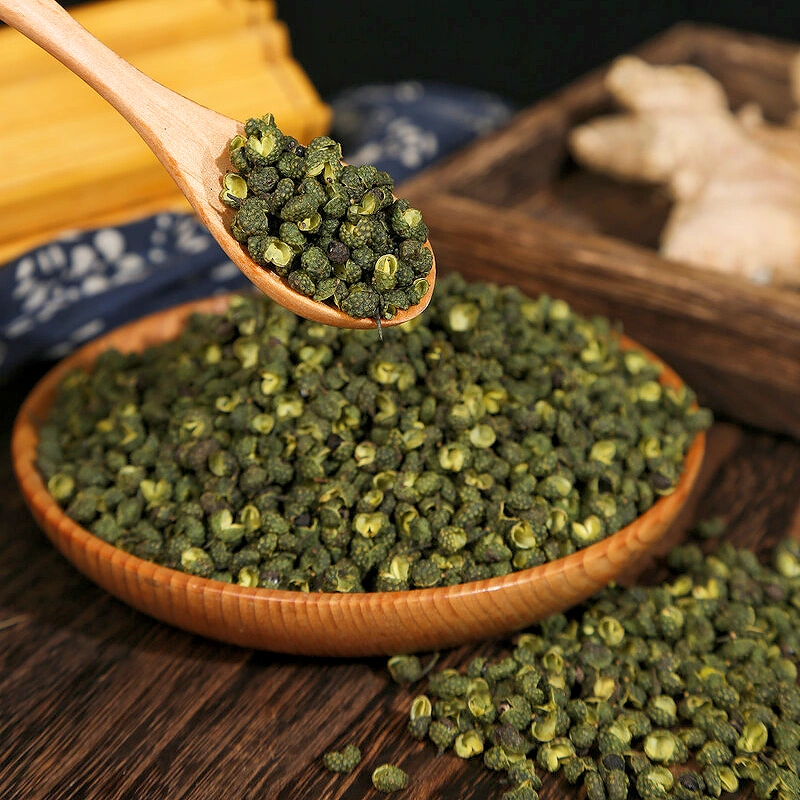
Here's how to eat and use green Sichuan peppercorns:
In Stir-Fries: Add whole green Sichuan peppercorns to stir-fried dishes to infuse them with their unique flavor and aroma. The peppercorns release their fragrance when heated, imparting a subtle citrusy and numbing taste to the dish.
In Sauces and Marinades: Crush or grind green Sichuan peppercorns and add them to sauces or marinades for meats, seafood, or tofu. They can enhance the flavor of the sauce and provide a delightful numbing sensation.
In Pickling: Green Sichuan peppercorns can be used in pickling brines to add complexity to pickled vegetables. The citrusy and slightly floral notes complement the tanginess of the pickles, creating a well-balanced flavor profile.
Infused Oils: Infuse cooking oils with green Sichuan peppercorns by heating the oil and adding the peppercorns. This flavored oil can then be used to stir-fry vegetables, meats, or noodles, imparting a subtle peppery aroma to the dish.
Garnish: Sprinkle crushed green Sichuan peppercorns over finished dishes as a garnish to add a burst of flavor and a touch of numbing sensation. They work well as a finishing touch on soups, salads, or grilled meats.
In Noodle Dishes: Incorporate green Sichuan peppercorns into noodle dishes, such as Dan Dan noodles or cold sesame noodles, to enhance the overall flavor. They can be added to the sauce or sprinkled on top before serving.
When using green Sichuan peppercorns, it's essential to use them sparingly as their flavor can easily overpower other ingredients. Additionally, be mindful of the numbing sensation they impart, especially if you're not accustomed to it. Start with a small amount and adjust to your taste preferences. Overall, green Sichuan peppercorns are a versatile and flavorful spice that can elevate a wide range of dishes with their unique taste and aroma.
Red Sichuan peppercorns
Red Sichuan peppercorns, also known as Chinese prickly ash, are the fully matured husks of the seeds from the prickly ash tree (Zanthoxylum genus), primarily Zanthoxylum simulans and Zanthoxylum bungeanum. Unlike black peppercorns or chili peppers, Sichuan peppercorns are not spicy in the traditional sense; instead, they provide a distinctive numbing and tingling sensation on the palate, known as "ma" in Chinese cuisine.

Here's how to eat and use red Sichuan peppercorns:
In Stir-Fries and Braised Dishes: Red Sichuan peppercorns are a staple in Sichuan cuisine and are often used in stir-fries and braised dishes. Add whole or crushed peppercorns to the dish during cooking to infuse it with their unique flavor and numbing sensation.
In Hot Pots: Red Sichuan peppercorns are commonly added to spicy hot pot broth to enhance its flavor and create a numbing sensation. The peppercorns release their aromatic oils into the broth, elevating the overall dining experience.
Ground into Powder: Grind red Sichuan peppercorns into a fine powder using a spice grinder or mortar and pestle. The powder can be used as a seasoning for meats, poultry, seafood, and vegetables, adding a bold kick and numbing effect to the dish.
In Marinades and Rubs: Incorporate ground red Sichuan peppercorns into marinades and rubs for meats, tofu, or vegetables. The peppercorns infuse the ingredients with their intense flavor and provide a tingling sensation when consumed.
Flavoring Oils and Sauces: Infuse cooking oils with whole red Sichuan peppercorns by heating the oil and adding the peppercorns. This flavored oil can then be used to stir-fry ingredients or drizzle over dishes for added flavor.
Pickling and Fermentation: Red Sichuan peppercorns can be added to pickling brines or fermentation jars to impart their unique flavor to pickled vegetables or fermented foods.
Garnish: Sprinkle crushed red Sichuan peppercorns over finished dishes as a garnish to add texture and flavor. They can enhance the presentation of dishes such as salads, soups, or grilled meats.
When using red Sichuan peppercorns, it's important to use them in moderation as their flavor can be quite intense, and the numbing sensation may be overpowering for some individuals. Experiment with different quantities to find the right balance for your taste preferences. Overall, red Sichuan peppercorns are a versatile and flavorful spice that adds depth and complexity to a wide range of dishes in Chinese cuisine.
Flavor Profile
Green Sichuan Peppercorns:Green Sichuan peppercorns are freshly harvested and have a natural grayish-green color. Green Sichuan peppercorns are harvested before they fully mature, resulting in a milder flavor profile compared to their red counterparts. They possess a fresher, citrusy aroma with hints of pine and floral notes. The flavor tends to be less intense, making them ideal for dishes where a subtler peppery flavor is desired.
Green Sichuan peppercorns have a fresher taste and a more fragrant aroma, often used in cold dishes to enhance flavor.
Red Sichuan Peppercorns:Red Sichuan peppercorns have been processed, either dried or roasted, resulting in a red outer skin. Red Sichuan peppercorns are allowed to fully ripen on the tree before harvest, resulting in a more robust and potent flavor. They have a deeper, earthier taste with stronger citrus and floral undertones. The numbing sensation they impart is more pronounced, adding complexity and depth to dishes.
Red Sichuan peppercorns are spicier and offer a stronger numbing sensation. While not as fragrant as green ones, they are preferred for cooking.
Appearance
Green Sichuan Peppercorns: Green Sichuan peppercorns are typically smaller and lighter in color compared to their red counterparts. They have a vibrant green hue and a slightly wrinkled appearance. The husks are thinner and less brittle than those of red Sichuan peppercorns.
Red Sichuan Peppercorns: Red Sichuan peppercorns are larger and darker in color, ranging from deep red to brownish-red. They have a more textured surface with thicker husks, giving them a robust appearance. The seeds inside may be more visible, and they tend to be more aromatic than green Sichuan peppercorns.
Regional Differences
Green Sichuan peppercorns are primarily grown in regions such as Jilin, Heilongjiang, Liaoning, Jiangsu, and Hebei, with some distribution in Fujian, Hubei, Anhui, Inner Mongolia, and Hunan.
Red Sichuan peppercorns are mainly produced in areas like Shanxi, Shaanxi, Hebei, and Gansu, with additional distribution in Sichuan, Shandong, and Qinghai.
Culinary Applications
Green Sichuan Peppercorns: Green Sichuan peppercorns are often used in dishes where a milder flavor and aroma are preferred. They work well in delicate stir-fries, seafood dishes, and sauces where the peppery taste should complement rather than overpower other ingredients. Green Sichuan peppercorns can also be used in pickling or infusing oils for a subtle citrusy flavor.
Red Sichuan Peppercorns: Red Sichuan peppercorns are prized for their intense flavor and numbing effect, making them a staple in Sichuan cuisine. They are commonly used in spicy stir-fries, braised dishes, and hot pots to add depth and heat. Red Sichuan peppercorns can also be ground into powder for seasoning meats, marinades, and sauces, providing a bold kick to the dish.
While both green and red Sichuan peppercorns share the characteristic numbing sensation and citrusy flavor associated with Sichuan cuisine, they offer distinct differences in taste, appearance, and culinary applications. Whether you're seeking a subtle accent or a fiery punch in your dishes, understanding the nuances between green and red Sichuan peppercorns can elevate your culinary creations to new heights.
In summary, apart from the difference in color, green and red Sichuan peppercorns vary slightly in flavor, with green ones being fresher and red ones spicier. Green peppercorns are typically used for cooking or making Sichuan peppercorn oil, while red ones are preferred for stir-frying. For beginners, red Sichuan peppercorns are recommended due to their milder flavor, while green ones are suitable for more advanced users.

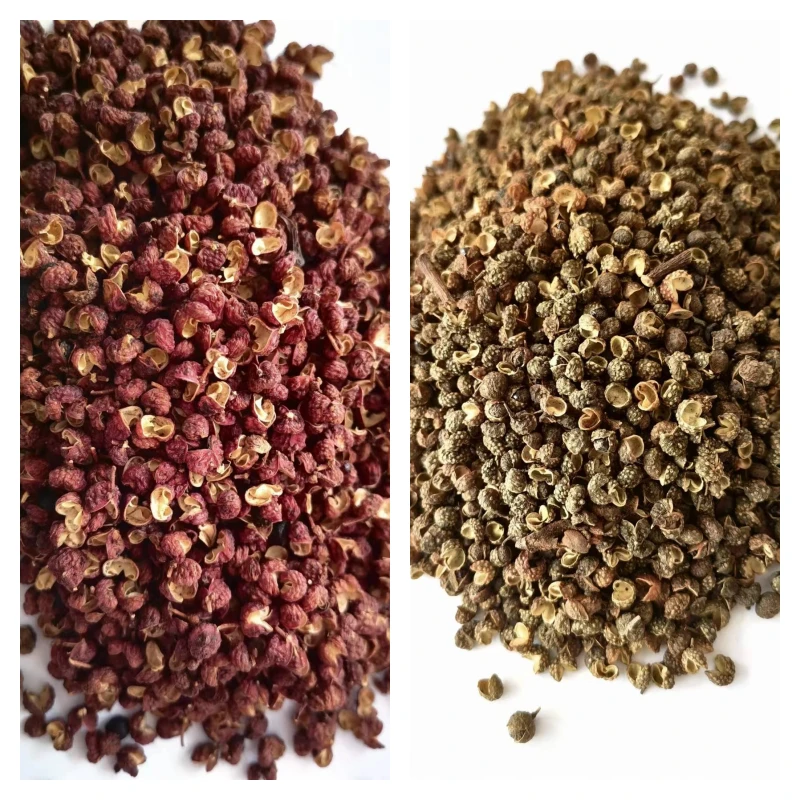
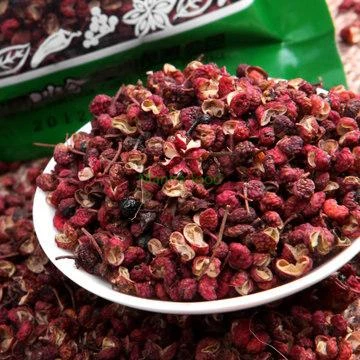
300.webp)

811.webp)

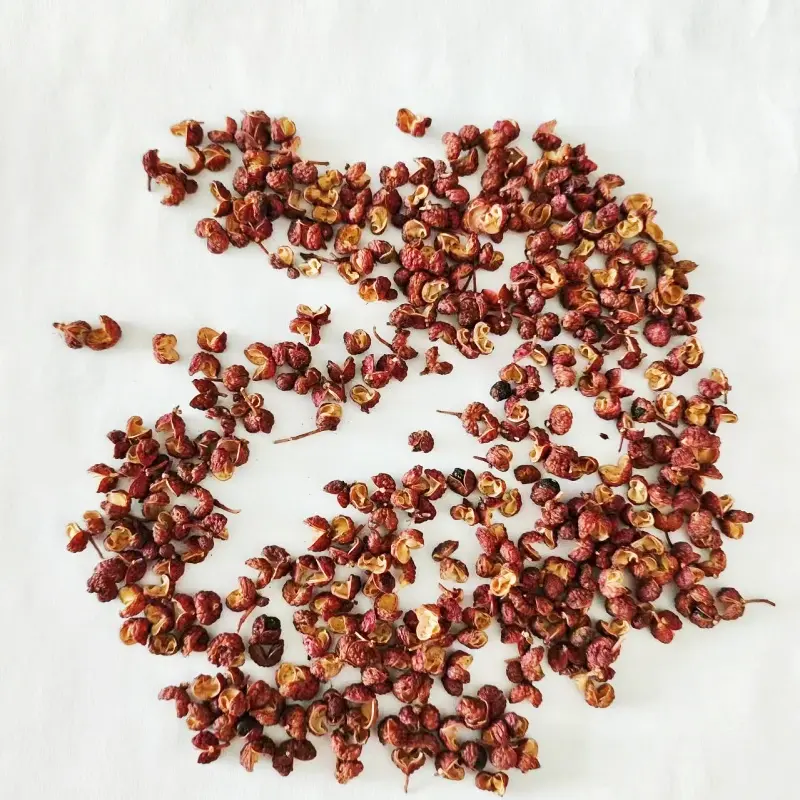

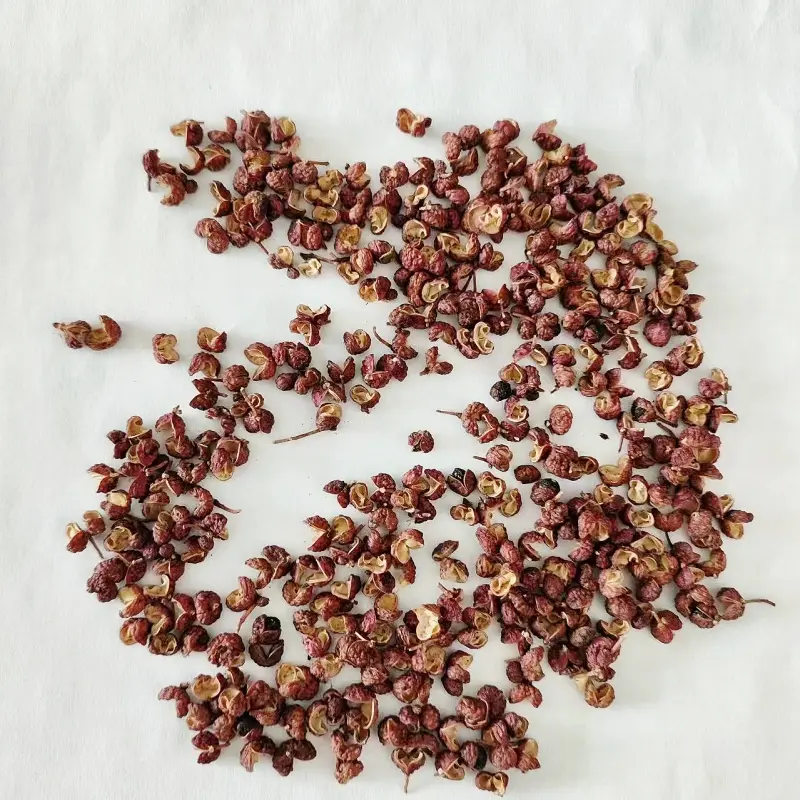
114.webp)
